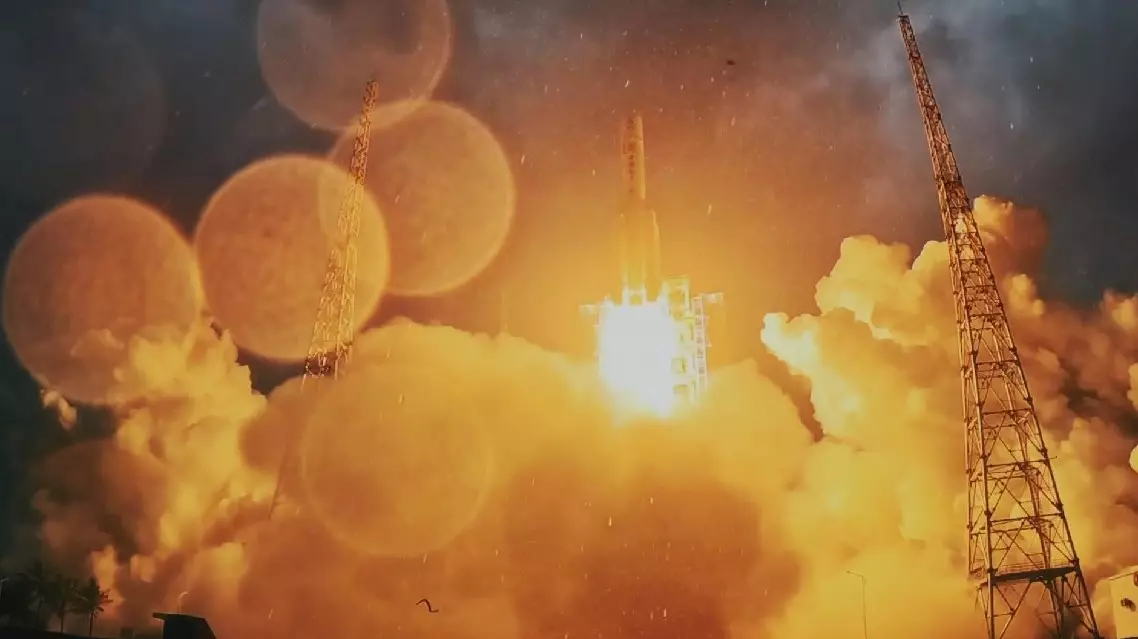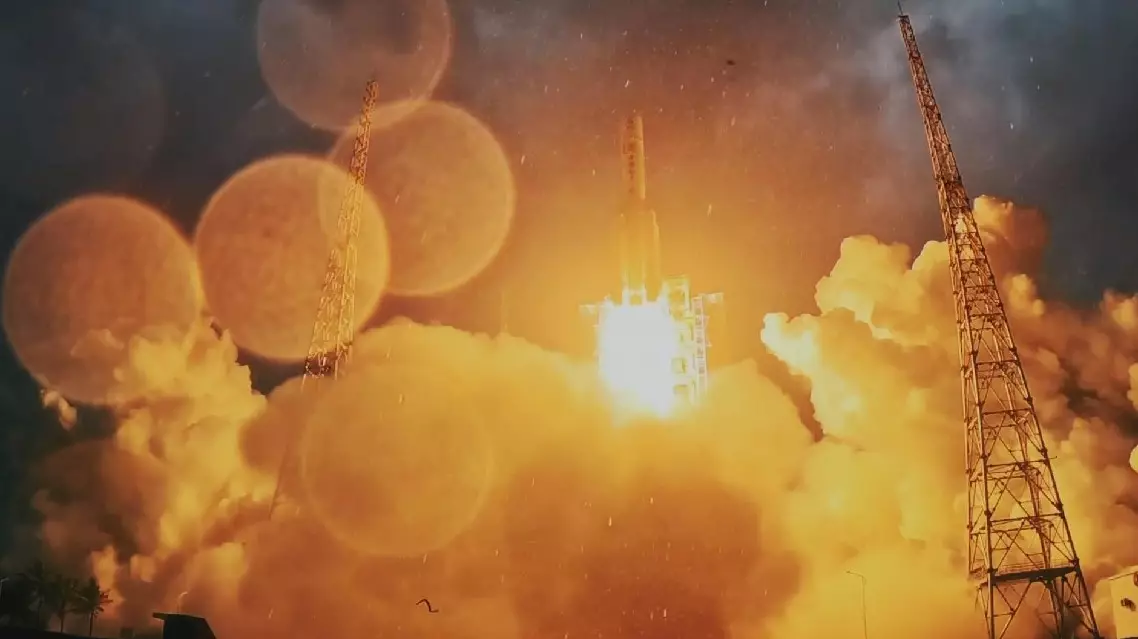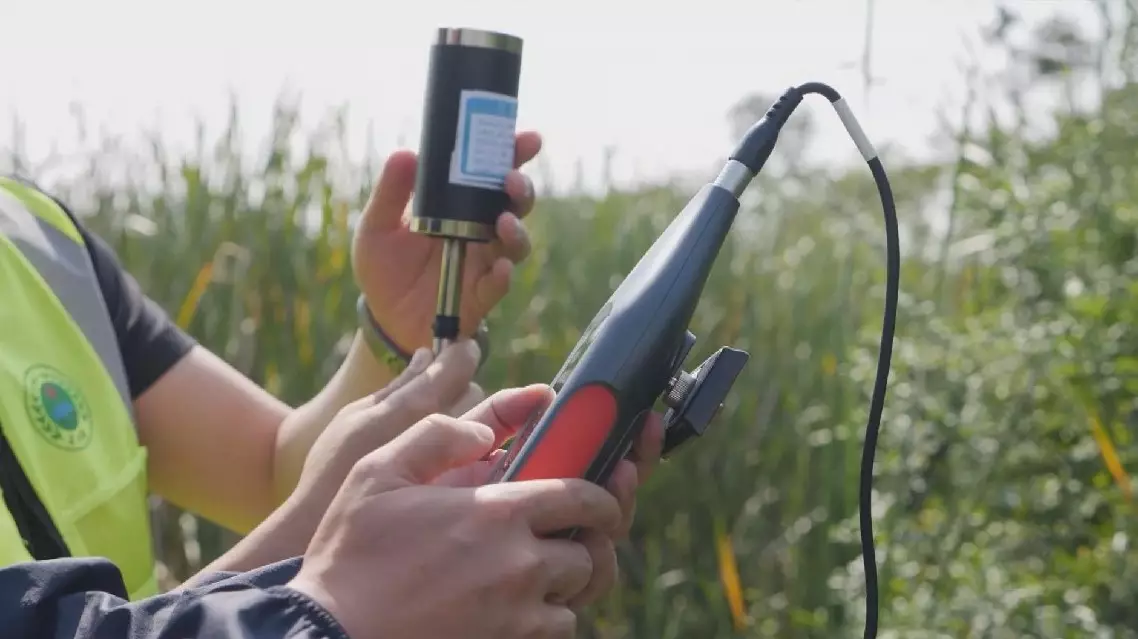The successful launch of China's Chang'e-6 lunar probe not only signifies a significant step in space exploration but also highlights the spirit of international cooperation.
A Long March-5 rocket, carrying the Chang'e-6 spacecraft, blasted off from its launchpad at the Wenchang Space Launch Site on the coast of China's southern island province of Hainan at 17:27 (Beijing Time) on May 3.
The probe, carrying payloads from France, the European Space Agency, Italy, and Pakistan, saw scientists from these countries witnessing the historic event.
Among the observers, Stas Barabash, SSPT Program head at the Swedish Institute of Space Physics, expressed his excitement.
"Definitely, it's probably one of the, I think, the most exciting launches I've ever seen in my life," said Barabash.
Pierre-Yves Meslin, DORN principal investigator at IRAP/CNRS, also expressed confidence in the mission.
Aarti Holla-Maini, director of the United Nations Office for Outer Space Affairs, drew a cultural parallel.
"In India, when you get married and it rains, it's considered a blessing from the heavens. So, hopefully this was also a blessing to Chinese sixth," she said.
Christian Feichtinger, executive director of the International Astronautical Federation, shared his enthusiasm for the mission, emphasizing its significance.
"I'm excited and it's a great mission that brings back samples," he said.
Despite concerns about the weather, James Carpenter, acting head of the European Space Agency Lunar Science Office, expressed his confidence in the mission.
"I'm interested to see whether, despite the weather, we are going to go ahead anyway. I think, I think we are going to go ahead," said Carpenter.
Witnessing the successful launch, Neil Melville-Kenney, NILS technical officer at the European Space Agency, conveyed his excitement and offered congratulations.
"What beautiful weather we have. We can see the rocket go. We can hear the rocket go. We're close enough to feel the rocket go. What a fantastic launch! Congratulations!" he said.
The Chang'e-6 lunar module returned to Earth on Tuesday afternoon, successfully completing its historic mission to collect the first ever samples from the far side of the moon in a major milestone for the country's space program.
The return capsule landed at a predetermined site in Inner Mongolia Autonomous Region at 14:07 Beijing Time.

Foreign scientists witness historic launch of Chang'e-6

Foreign scientists witness historic launch of Chang'e-6
The China National Environmental Monitoring Center (CNEMC) has launched the establishment of a database of natural sounds within urban areas this year, aiming to help manage urban noise pollution by more accurately identifying and differentiating natural sounds from artificial noises.
China plans to build a unified national network for automatically monitoring acoustic environmental quality starting on January 1, 2025. The system will focus on monitoring urban man-made noises, but at the same time, it will also unavoidably include natural sounds from birds and insects, as well as the rustling of wind and rain. These natural sounds could affect the accuracy of noise assessments, so it is necessary to collect them in a database so as to better identify and classify different types of noise. By the Dianchi Lake in Kunming, southwest China's Yunnan Province, local environmental monitoring professionals used specific equipment to capture various sounds within a wetland park. They collected sounds from birds, insects, and frogs, along with natural noises like rain, thunder, and wind. These sounds could potentially influence the monitoring results of urban acoustic environmental quality.
They recorded sounds for at least two hours at each monitoring location. They then used specialized software to analyze these recordings, selecting the clearer and less disrupted natural sounds to upload them into the database.
"The natural sounds in this recording are relatively clear and distinct, and the background noise is relatively low, so it is valid. But look at the waveform of this recording, the bird or insect sounds are unclear, and the environmental noise is relatively loud. Based on these two criteria, this recording is invalid," said He Fanyu, an engineer at the Yunnan Ecological and Environment Monitoring Center.
Since the first quarter of this year, the CNEMC has organized local environmental monitoring stations to record natural sounds in urban areas of over 80 cities. As of now, more than 420,000 raw recordings have been made, with 80,000 of them being valid. By the end of the year, it is expected that 600,000 valid recordings will have been collected nationwide for the development of China's largest noise database.
"After the database is built, our next step is to train and test an intelligent sound recognition model. It will help us not only to check if noise levels exceed allowed limits but also to identify where the excess noise is coming from. For example, construction noise is temporary and highly variable, so it requires specific management, especially during nighttime," said Wang Yun, a senior engineer at the Physics Department of the CNEMC.

China developing natural sound database to better tackle urban noise pollution











